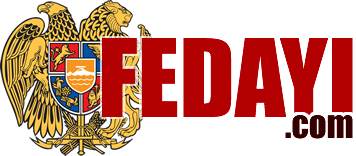HAYOTS MARDIGNER | Arevin, Gargoudin Teh Pouk-Poranin

HAYOTS MARDIGNER
(Arevin, Gargoudin Teh Pouk-Poranin)
Arevin, gargoudin teh pouk-poranin
Mayterou, poghotsi mout angyunneroun
G’esbasek, guh haladzek ou the harvadzek
Ammenour, ammen degh nerg yek touk.
Hayots mardigner, hayots mardigner
Mer aysorvan anveher chan Fedayiner
Hayots mardigner
Azadoutian siruyn zohvogh chan zinvorner
Hayots mardigner, hayots mardigner,
Rosdomi ou Toumani kach vortiner
Prnagal tourkuh harvadzogh dghak ou aghchigner
Khughdji mardigner, gamki mardigner,
Hayots mardigner
Nbadaguh tser mod togh chtoulana,
Artar kntaguh tser togh mishd pazmana,
Pazougneruh tser togh haverj amranan
Khoumperuh tser togh mishd-mishd khudanan.
Hayots mardigner, hayots mardigner
Mer aysorvan anveher chan Fedayiner
Hayots mardigner
Azadoutian siruyn zohvogh chan zinvorner
Hayots mardigner, hayots mardigner,
Rosdomi ou Toumani kach vortiner
Prnagal tourkuh harvadzogh dghak ou aghchigner
Khughdji mardigner, gamki mardigner,
Hayots mardigner
Lyrics: Vicken Hovsepian
Հայոց Մարտիկներ
(Արեւին, կարկուտին թէ բուք բորանին)
Արեւին, կարկուտին թէ բուք բորանին
Մայթերու, փողոցի մութ անկիւններուն
Կը սպասէք, կը հալածէք ու կը հարուածէք
Ամէնուր, ամէն տեղ ներկայ էք դուք։
Հայոց մարտիկներ, հայոց մարտիկներ
Մեր այսօրուան անվեհեր ջան ֆեդայիներ,
Հայոց մարտիկներ,
Ազատութեան սիրոյն զոհուող ջան զինուորներ
Հայոց մարտիկներ, հայոց մարտիկներ
Ռոստոմի ու Դումանի քաջ որդիներ
Բռնակալ թուրքը հարուածող տղաք ու աղջիկներ,
Խղճի մարտիկներ, կամքի մարտիկներ,
Հայոց մարտիկներ։
Նպատակը ձեր թող չթուլանայ,
Արդար գնդակը ձեր թող միշտ բազմանայ,
Բազուկները ձեր թող յաւերժ ամրանան
Խումբերը ձեր թող միշտ միշտ խտանան։
Հայոց մարտիկներ, հայոց մարտիկներ
Մեր այսօրուան անվեհեր ջան ֆեդայիներ,
Հայոց մարտիկներ,
Ազատութեան սիրոյն զոհուող ջան զինուորներ
Հայոց մարտիկներ, հայոց մարտիկներ
Ռոստոմի ու Դումանի քաջ որդիներ
Բռնակալ թուրքը հարուածող տղաք ու աղջիկներ,
Խղճի մարտիկներ, կամքի մարտիկներ,
Հայոց մարտիկներ։
